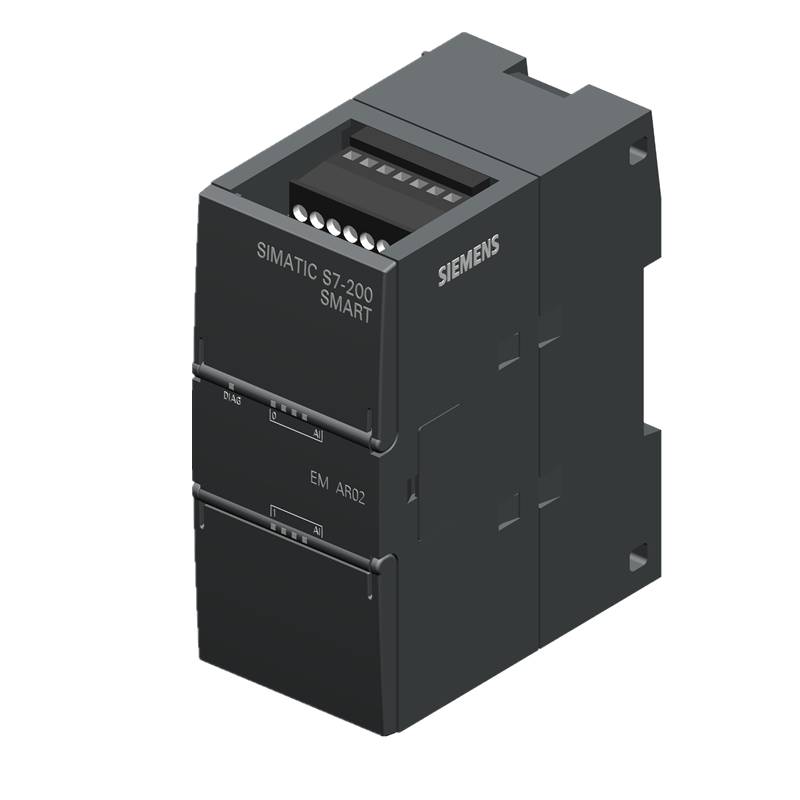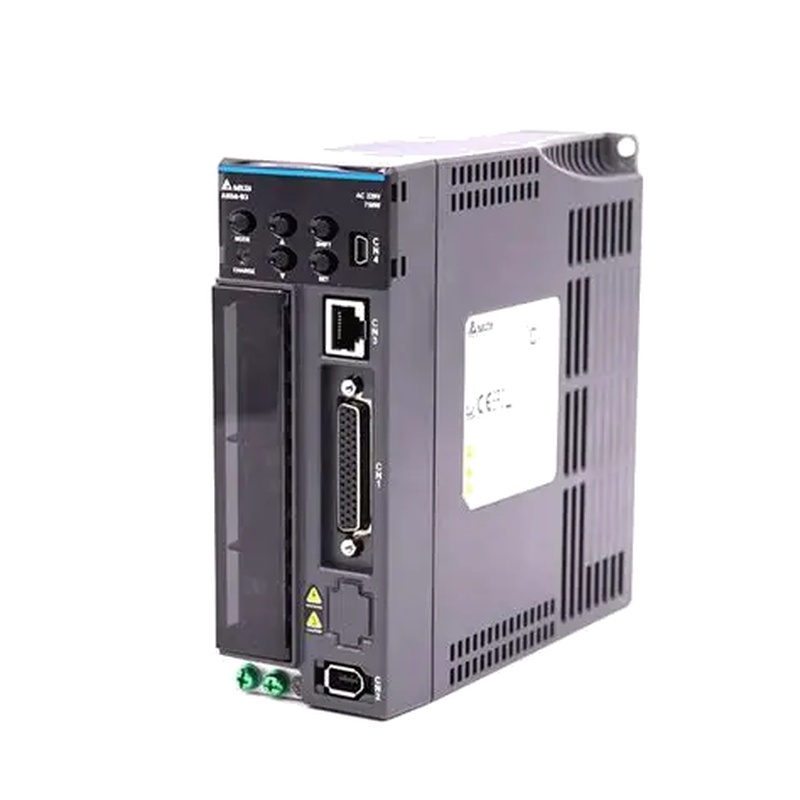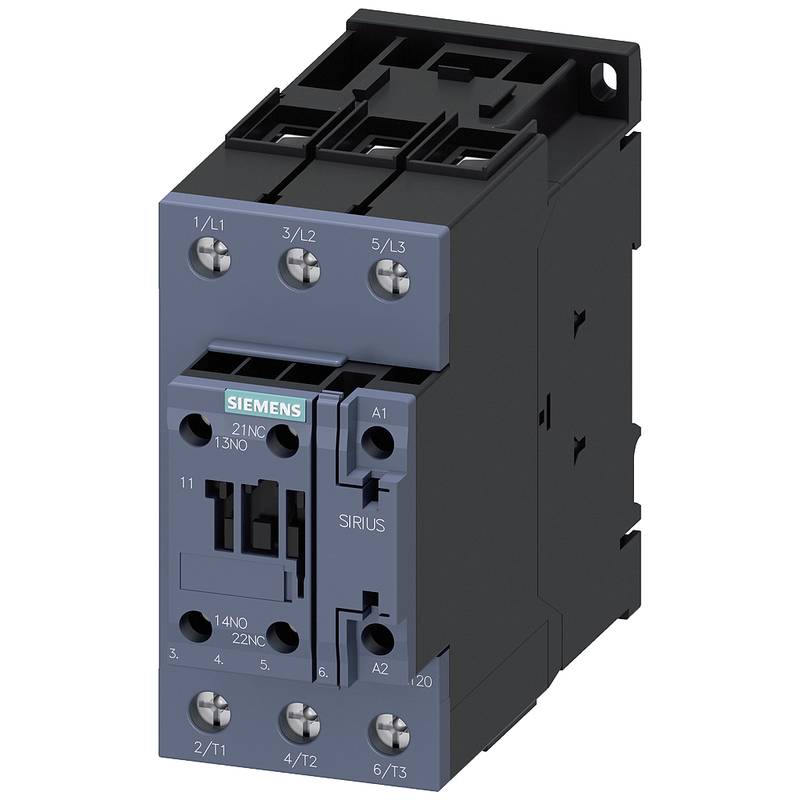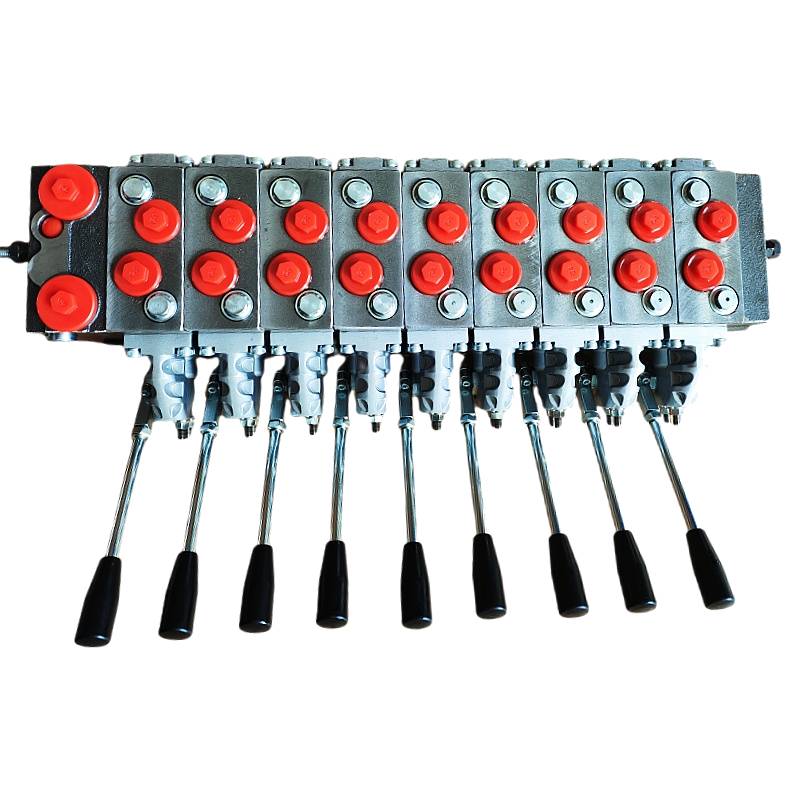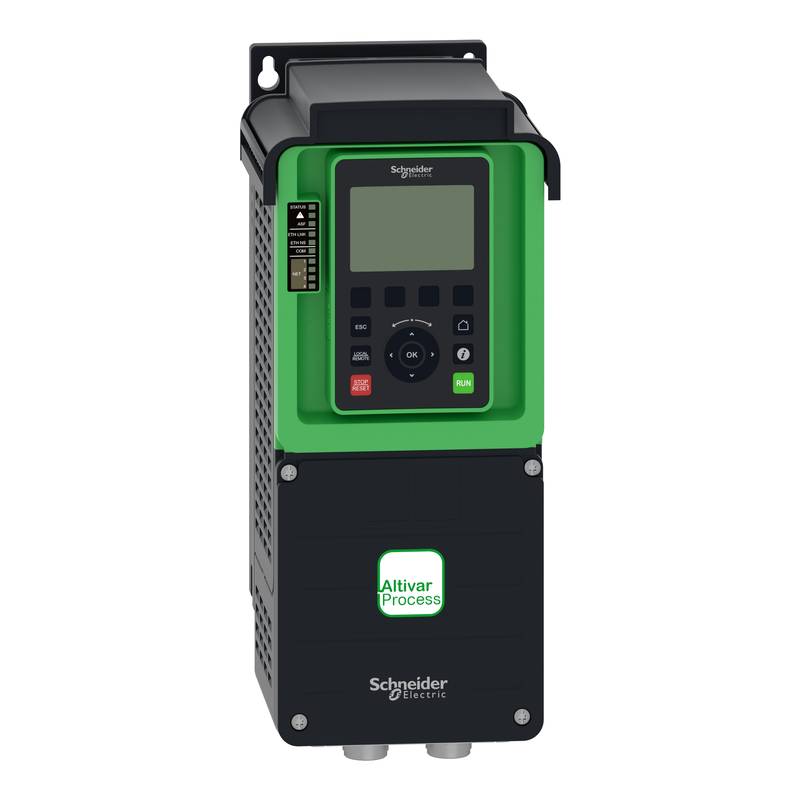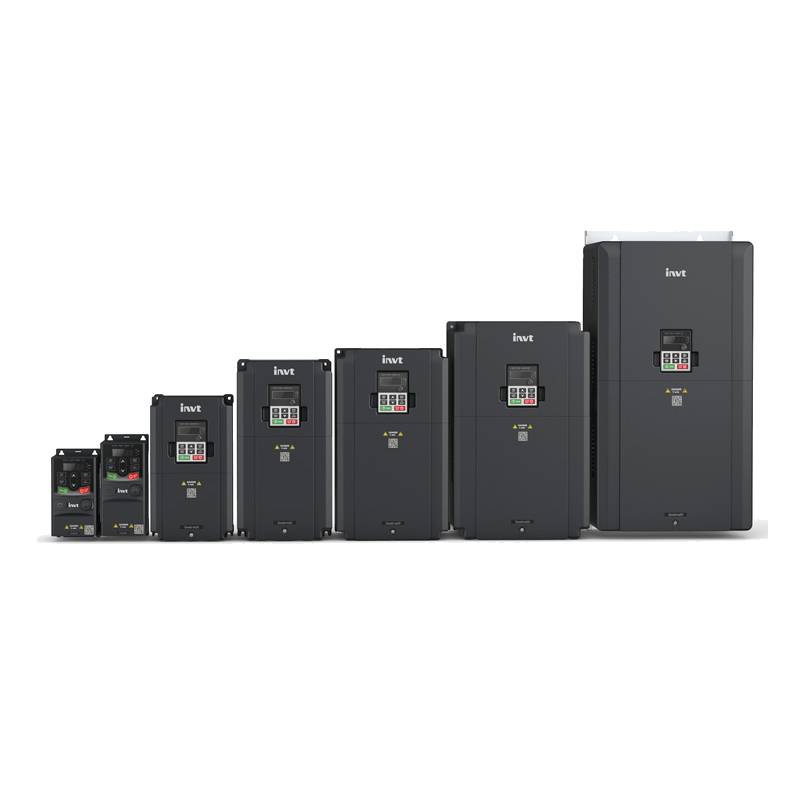
The Siemens 6ES7288-3AR0A0 module represents a crucial component for process control within the SIMATIC S7-200 SMART automation platform. This hybrid module, specifically designed for analog input and resistance temperature detector (RTD) applications, offers two analog input channels, enabling precise measurement and data acquisition in industrial environments. Its core advantage lies in its ability to interface directly with RTD sensors, providing a robust solution for temperature monitoring critical to many process industries. The module's technical specifications include a 15-bit plus sign resolution for analog value generation, with parameterizable integration times of 10, 16.67, 20, or 100 ms, and interference voltage suppression capabilities. It supports a wide array of RTD types, including Pt10, Pt100, Ni100, Cu10, and their variants, as well as resistance inputs from 0 to 3000 ohms. The module operates at a rated voltage of 24V DC with a power consumption of 1.5W and current consumption of 80mA (SM bus) or 40mA (24V DC). Its compact dimensions (45 x 100 x 81 mm) and lightweight design (approx. 148.7g) facilitate easy integration into control cabinets, with standard DIN rail mounting. The 6ES7288-3AR02-0AA0 is an active product, indicating its current availability and support from Siemens.
Core Features & Market Positioning
The Siemens 6ES7288-3AR02-0AA0 distinguishes itself through its specialized RTD input capabilities, a key differentiator in process control applications where accurate temperature measurement is paramount. Unlike general-purpose analog input modules, its design is optimized for the specific resistance characteristics of various RTDs, ensuring higher fidelity in temperature readings. This focus positions it as a targeted solution for industries such as chemical processing, food and beverage, HVAC, and manufacturing, where precise temperature control directly impacts product quality, safety, and operational efficiency. Siemens' established reputation for reliability and its comprehensive automation ecosystem further enhance its market appeal, offering users confidence in the longevity and support of their automation investments. The integration within the S7-200 SMART platform, known for its cost-effectiveness and ease of use for smaller-scale automation tasks, makes this module an attractive option for OEMs and system integrators looking to deliver competitive solutions.
Key Application Scenarios
The Siemens 6ES7288-3AR02-0AA0 is ideally suited for applications requiring precise temperature monitoring and control. Its primary function is to interface with Resistance Temperature Detectors (RTDs) to convert raw resistance signals into usable digital data for the S7-200 SMART PLC. Common use cases include:
Industrial Process Monitoring: Measuring temperatures in reactors, pipelines, and storage tanks to ensure optimal operating conditions and product consistency. Environmental Control: Monitoring ambient temperatures in server rooms, cleanrooms, or greenhouses to maintain specific climate conditions. Machine Temperature Monitoring: Detecting overheating in critical machinery components to prevent damage and unplanned downtime. HVAC Systems: Regulating temperature in commercial and industrial buildings for comfort and energy efficiency. Food and Beverage Industry: Ensuring precise temperature control during cooking, chilling, and storage processes to maintain food safety and quality.
The module's ability to handle various RTD types and resistance values provides flexibility for diverse sensor selections.
Practical System Integration Guidance
Integrating the Siemens 6ES7288-3AR02-0AA0 into an S7-200 SMART system is straightforward. The module connects directly to the CPU or other expansion modules, occupying minimal space.
Wiring:
The module features removable terminals for simplified wiring. For RTD connections, ensure proper adherence to the wiring diagrams provided in the S7-200 SMART System Manual. Correct grounding and shielding are essential for accurate readings and to mitigate electrical noise.
Programming:
Configuration and programming are handled using the STEP 7-Micro/WIN SMART software. This intuitive software allows for parameterization of the analog inputs, including selection of the RTD type, scaling of the input values, and setting of alarm conditions. The software provides features like a command library and status monitoring to streamline development and diagnostics.
Operation and Risk Mitigation
Operation:
The 6ES7288-3AR02-0AA0 module functions by accurately measuring the resistance of connected RTD sensors and converting these values into a digital format that the S7-200 SMART CPU can process. The module's 15-bit resolution ensures a high degree of accuracy in temperature readings. Proper configuration within the Micro/WIN SMART software is critical for optimal performance.
Risk Mitigation:
To ensure safe and reliable operation, adhere to the following: Environmental Conditions: While the module is designed for industrial use with an IP20 protection level, it should be installed in a clean, dry environment to prevent contamination and electrical faults. Operating temperature range is typically -20°C to +60°C. Power Supply: Ensure a stable 24V DC power supply within the specified tolerances to prevent module malfunction or damage. Wiring Integrity: Verify all connections are secure and correctly wired to prevent short circuits or signal loss. Refer to the S7-200 SMART System Manual for detailed wiring guidelines. Electrical Interference: Shielding of sensor cables and proper grounding are crucial to minimize susceptibility to electromagnetic interference (EMI), which can affect measurement accuracy.
Scalability & Long-Term Value
The Siemens 6ES7288-3AR02-0AA0, as part of the S7-200 SMART platform, offers a degree of scalability for smaller automation projects. The S7-200 SMART CPUs support expansion with up to six expansion modules and one signal board, allowing for increased I/O points or additional functionalities as project requirements evolve. This modular design ensures that users can adapt their systems without a complete overhaul. Furthermore, the Siemens ecosystem provides integration possibilities with other Siemens products, such as SINAMICS drives and SIMATIC HMI panels, creating cohesive automation solutions. While direct integration with advanced IIoT platforms might require additional gateways or middleware, the data acquisition capabilities of the S7-200 SMART system provide a foundation for future smart manufacturing initiatives. Siemens' commitment to product lifecycle management ensures ongoing support and availability of spare parts, contributing to the long-term value of the investment.
*
Frequently Asked Questions (FAQs)
Q1: What types of sensors can the Siemens 6ES7288-3AR02-0AA0 module connect to?
The Siemens 6ES7288-3AR02-0AA0 module is specifically designed for connecting to Resistance Temperature Detectors (RTDs). It supports a wide variety of RTD types, including Pt10, Pt50, Pt100, Pt200, Pt500, Pt1000, Ni100, Ni120, Ni200, Ni500, Ni1000, Cu10, Cu50, and Cu100.
It also accommodates direct resistance measurements within specific ranges, such as 0 to 48 ohms, 0 to 150 ohms, 0 to 300 ohms, 0 to 600 ohms, and 0 to 3000 ohms. This broad compatibility ensures flexibility in sensor selection for various process control applications.
The module converts the measured resistance values into digital data, which is then processed by the S7-200 SMART PLC for monitoring and control purposes.
Q2: What are the key technical specifications of the 6ES7288-3AR02-0AA0 module?
This module features two analog input channels designed for RTD sensors. It offers a high resolution of 15 bits plus sign for accurate analog value generation. The integration time is parameterizable, with options of 10, 16.67, 20, or 100 ms.
The module operates on a 24V DC supply, consuming 1.5W of power. It has dimensions of 45 x 100 x 81 mm and weighs approximately 148.7g.
It includes interference voltage suppression and supports a wide range of RTD types and resistance inputs, making it versatile for industrial temperature measurement.
Q3: How is the 6ES7288-3AR02-0AA0 module installed and wired?
Installation is typically done on a standard DIN rail within a control cabinet. The module features removable terminals, which simplify the wiring process.
For wiring RTD sensors, it is crucial to consult the S7-200 SMART System Manual for specific diagrams and best practices. Proper grounding and shielding of sensor cables are recommended to ensure signal integrity and minimize electrical noise.
The module is designed to connect directly to the S7-200 SMART CPU or other compatible expansion modules within the same system.
Q4: What software is used to configure and program the 6ES7288-3AR02-0AA0 module?
The Siemens STEP 7-Micro/WIN SMART software is used for configuration and programming of this module. This software allows users to parameterize the analog inputs, select RTD types, scale input values, and set up alarm conditions.
The software offers features such as a new menu design, movable windows, variable definitions, a novel wizard setting, status monitoring, and a convenient command library. It also provides powerful password protection functions for enhanced security.
Users can refer to the S7-200 SMART System Manual for detailed information on the software's functionalities and advanced programming techniques.
Q5: Can the 6ES7288-3AR02-0AA0 module be used for outputs?
No, the Siemens 6ES7288-3AR02-0AA0 is exclusively an analog input module. It is designed to receive and process signals from sensors, such as RTDs and resistance-based devices.
The S7-200 SMART platform offers separate modules for analog outputs, such as the SM AQ02 (6ES7288-3AQ02-0AA0), which provides two analog output channels for controlling actuators or other output devices.
Therefore, for applications requiring both input and output capabilities, a combination of input and output modules would be necessary.
Q6: What is the operating temperature range for this module?
The Siemens 6ES7288-3AR02-0AA0 module is designed for industrial environments and typically operates within a temperature range of -20°C to +60°C. This specification ensures reliable performance even in moderately harsh conditions.
Maintaining this operating temperature range is crucial for the longevity and accuracy of the module. Prolonged exposure to temperatures outside this range can lead to performance degradation or component failure.
Proper ventilation and environmental control within the control cabinet are essential to ensure the module stays within its specified operating parameters.
Q7: How does the resolution of the 6ES7288-3AR02-0AA0 module impact its performance?
The module offers a resolution of 15 bits plus sign for analog value generation. This high resolution allows for the precise conversion of resistance changes from RTD sensors into digital values.
A higher resolution means that smaller variations in temperature (and thus resistance) can be detected and accurately represented by the PLC. This is critical for processes requiring tight temperature control and accurate data logging.
For example, in applications where even minor temperature fluctuations are significant, the 15-bit resolution ensures that the system can capture and react to these subtle changes effectively.
Q8: What is the power consumption and current draw of the 6ES7288-3AR02-0AA0 module?
The module has a power consumption of 1.5 Watts. Its current consumption is 80 mA when communicating via the SM bus and 40 mA when drawing power from the 24V DC supply.
These values are important for system power budget calculations, especially when designing control panels with multiple modules. They indicate that the module is relatively energy-efficient for its capabilities.
Understanding the power and current requirements ensures that the power supply unit for the S7-200 SMART PLC system is adequately sized to support all connected modules.
Q9: Can this module be used with older Siemens S7-200 PLCs, or only the S7-200 SMART series?
The Siemens 6ES7288-3AR02-0AA0 module is specifically designed for the SIMATIC S7-200 SMART platform. It is not directly compatible with the older, standard S7-200 PLC series.
The S7-200 SMART series introduced specific enhancements and communication protocols that this module utilizes. Using it with an older S7-200 CPU would likely result in communication errors or complete non-functionality.
It is essential to ensure that the module is paired with a compatible S7-200 SMART CPU to achieve proper operation and integration within the automation system.
Q10: What are the dimensions and weight of the 6ES7288-3AR02-0AA0 module?
The module has compact dimensions of 45 mm in width, 100 mm in height, and 81 mm in depth (W x H x D). Its weight is approximately 148.7 grams.
These compact dimensions and light weight are advantageous for space-constrained control cabinets and simplify installation on standard DIN rails.
The small footprint allows for higher I/O density within a given enclosure, which is a key benefit for compact automation solutions.














